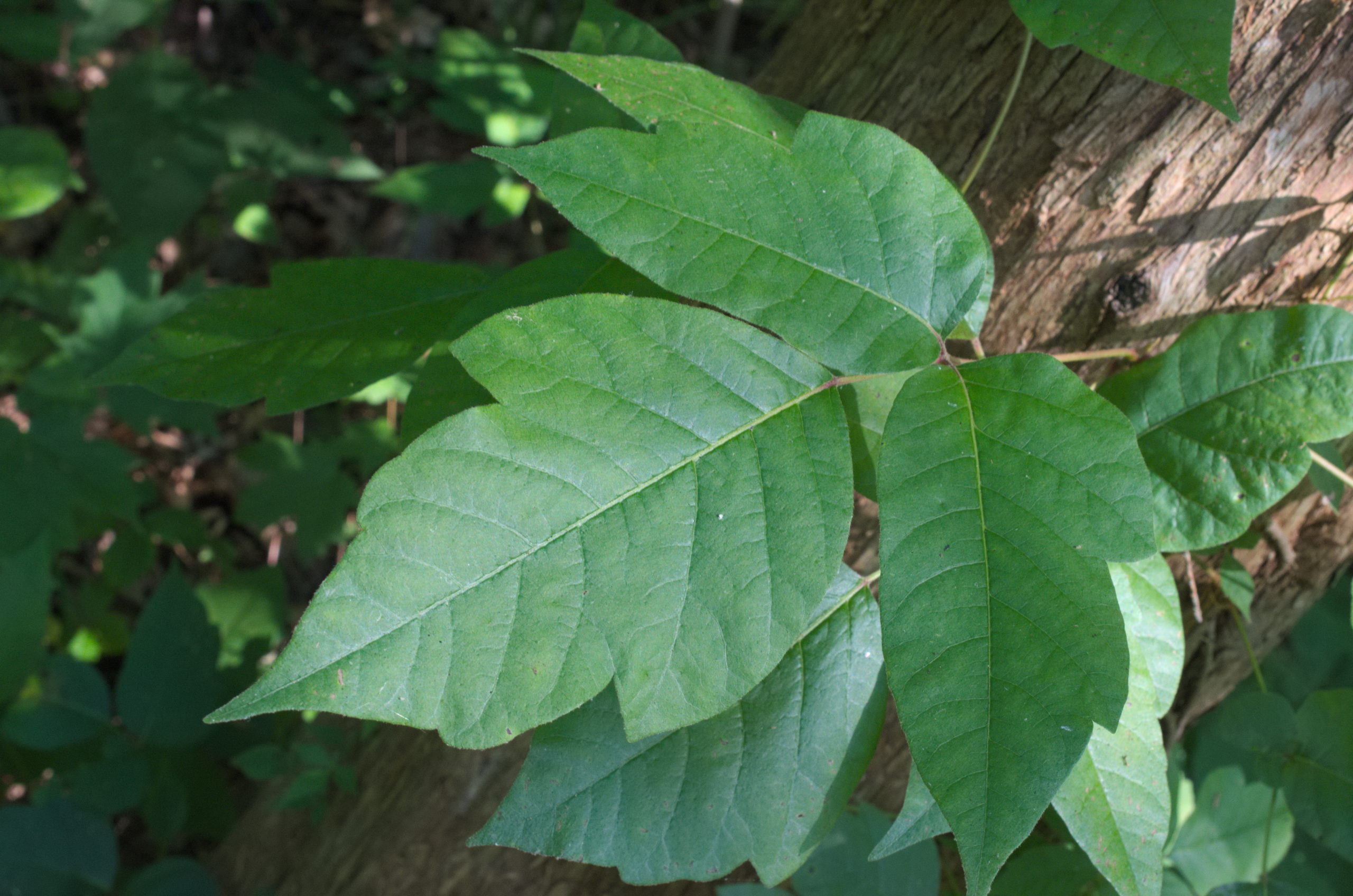
Poison ivy, that ubiquitous vine with three shiny leaves on each stem, gets a lot of bad publicity. But much of what is considered “common knowledge” about this plant, and its cousins poison oak and poison sumac, is just not true. Poison ivy is common throughout the United States, except for Alaska and Hawaii. None of the three plants are poisonous.
Poison ivy, poison oak, and poison sumac belong to the genus Toxicodendron and all produce a volatile oil called urushiol. Contact with this oil causes the itchy, blistering rash of poison ivy. What are the myths about poison ivy and the rash it produces? Read more to find out.
Myth: Poison ivy produces a poison.
The urushiol oil is not a poison. When the oil touches the skin of a person who has never been in contact with it before, there may be no overt reaction at all. But within the skin, the foreign molecules are stimulating your immune system, producing antibodies that will recognize the oil the next time. The next time, there will be a rash, an allergic reaction to the oil.
Myth: You have to touch the plant to get the rash.
Unfortunately not. The oil can be transferred onto your clothes, your dog, or your walking stick and get onto your skin later. This oil can also be picked up by passing through the smoke of a burning plant.
Myth: Once the rash breaks out, the seeping fluid from the blisters can transmit the condition to another person.
Fortunately, this myth is actually beneficial for you! Once the oil has been washed from the skin, there is no chance of transferring it to someone else. The serous fluid in the blisters does not contain the oil, thus meaning the rash is not contagious. If you have a rash in an area you can’t reach, you can ask a friend or family member to tend to it for you without fear of them getting the same itch.
Myth: You can’t get poison ivy from a dead plant.
The urushiol oil can remain on the dead plant for up to five years and it will be just as potent an allergen on the dead plant as on the live one. Dead or alive, poison ivy can still make your skin irritated if touched, so it’s best to just avoid it altogether.
Myth: If you’re allergic to poison ivy, you’re probably allergic to poison oak and poison sumac as well.
Yes. All three plants have just about the same allergens. So if you react to one, you should stay away from all three.
Treatment for Poison Ivy
If you’ve been exposed to the plant, wash off the oil as quickly as possible. The oil will penetrate the skin within 20 minutes. Be sure to wash all exposed clothing as well.
Once you have the rash, the itching can be helped by calamine, oatmeal baths, or burrow solution. Oral antihistamines can ease the itching as well.
In more severe cases, medical advice should be sought. The open, weeping skin lesions can become infected. In Grand Rapids, the doctors at WellCare Urgent Care will take excellent care of you. To schedule an appointment at WellCare Urgent Care, call (616) 591-5995 or request an appointment online.



